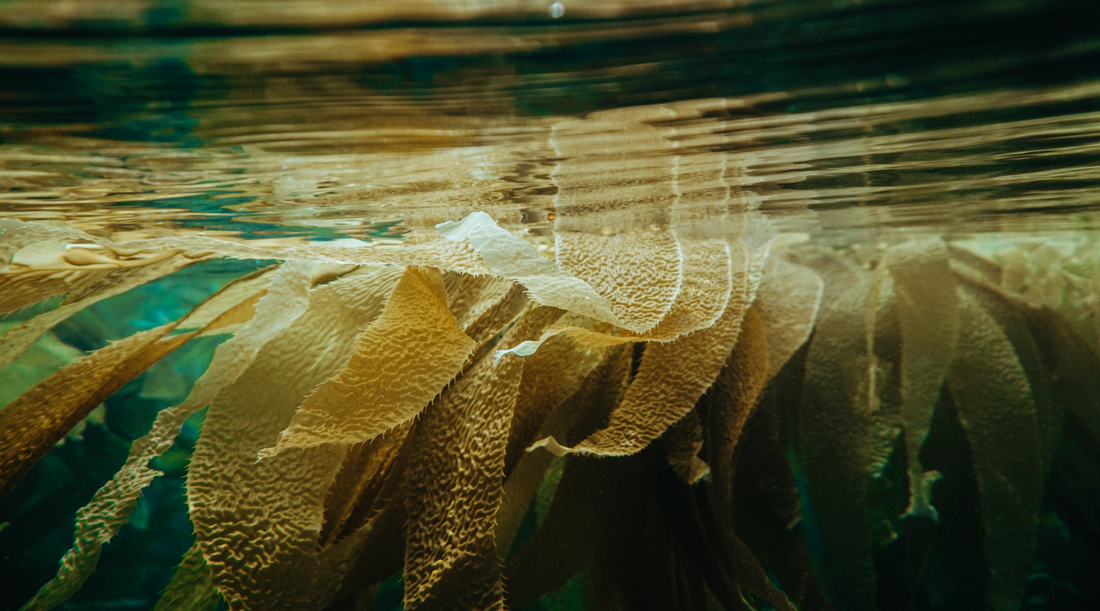
4 alternatives used to make an envelope
Share
The humble envelope never ceases to amaze. When we think envelope, rarely do we think seaweed or sugarcane, and yet these are just two of things you can actually use to make envelopes and packaging.
Way back when we were starting out (given we have been in the business for 49 years and counting), it was just the simple tree that got cut down. Nowadays you can buy toilet paper and toothbrushes made of bamboo. Bamboo! The creative power of our eco-solutionists (we coined that word!) out there solving our environmental problems is brilliant and astonishing.
And so, while beavering away to find alternative products to bring to our Peak customers, we recently stumbled upon the seaweed envelope. And it got us thinking about all of the types of environmentally friendly products available that are being used to revolutionise this estimated £5 billion turnover a year industry (Statistics from Ibisworld - Cardboard Packaging & Paper Bag Manufacturing in the UK Market). And eco packaging - think boxes, packaging, padded paper bags, and more - is the way forward for a sustainable, brighter future and Earth.
So, what is on the market for those eco savvy businesses who want alternative solutions for their packaging? If that happens to be you, and any of these appeal, please do get in touch!
Here we share just a few alternatives on the market:

Bamboo:
While once upon a time it was simply just a panda bear's favourite food, things have changed a lot in the last few decades. It’s become a staple for all sorts of household items from washing up brushes, food containers, children’s plates, and cutlery, to bathroom products like toilet paper and toothbrushes. Bamboo rejuvenates itself within 12 months, and as the UK company Who Gives a Crap explains (true advocates of bamboo and saving the planet by providing loos to third world countries) “We use bamboo because it’s actually a grass, so it grows incredibly fast after harvesting. Plus it’s biodegradable, so no clogging up the planet.”
Bamboo also doesn’t need a whole bunch of pesticides and chemicals to help it grow so its negative impact on the earth is much lower. Less water is also used to cultivate bamboo, and it starts to grow again as soon as it’s cut down. It can grow to full maturity in 1-5 years. Oh and another interesting fact about bamboo is that some varieties can grow as much as 90cm in a day! It’s incredibly sustainable, and naturally renewable, and it soaks up carbon dioxide at a rapid rate (fast surpassing trees). We could go on all day about why it’s so good, suffice to say, this is why it is such a great alternative for packaging too.
To make packaging with bamboo, a similar process is adopted to making paper and cardboard, and generally there are no additional chemicals or additives. Therefore, given bamboo is such a sustainable product, it means that packaging solutions that use it, are also a good option.

Seaweed:
The process of making paper from seaweed is similar to the paper making itself. But the great thing about seaweed is that seaweed paper and envelopes can be created from the parts that would otherwise be wasted. One company we work alongside make their seaweed paper products using 30% seaweed by-product – in short, it’s the secondary product that would otherwise be thrown away after a primary product has been made. So instead of wasting anything, the waste becomes a useful paper or packaging product, or a squeezy bottle solution that is 100% compostable, or even a food box that will biodegrade. And seaweed products biodegrade in just 4-6 weeks, just like a piece of fruit would. Seaweed is an excellent alternative to paper, though not as well known yet.
As Notpla explains, “using 1 tonne of seaweed by-product could save up to four tonnes of trees being felled”. It’s incredible to think that it is actually more sustainable than recycled paper.
Seaweed envelopes, packaging and product wrapping is definitely one to watch. We suspect it’s going to become more and more popular in the forthcoming years.

Sugarcane:
A lesser known but equally viable alternative to standard paper, are green products made using sugarcane. Similar to the process used to working with Polyethylene, sugarcane makes for a green alternative to plastic bags. There's a really clever video here which highlights the whole process, but put simply, sugar cane by products, or bagasse, can be extracted and used to make the paper.
Bagasse is actually the solid component of what remains after sugarcane has been crushed to extract the juice. In other words it is the the dry pulpy fibrous material that is then repurposed for paper. As such it's a great use of part of the plant that would otherwise be considered waste.
A little unknown fact about sugarcane is that on January the 26th in 1950, the Noble & Wood Machine Company, the Kinsley Chemical Company, and the Chemical Paper Company actually jointly demonstrated the first successful commercial production of newsprint produced from bagasse. How clever is that.

Corn starch:
Now remembering that all products are degradable because they can be broken down either biologically or chemically, a biodegradable product like a cornstarch plastic bag, is going to be much better for the planet given that it can be broken down by bacteria and organisms (naturally rather than chemically). The raw product used, corn, is entirely sustainable and renewable.
To set the scene, you can make plastic like bags from the sugars in corn starch and other such products. PLA (polylactic acid), which is biodegradable and edible, is typically made from the sugars in corn starch, cassava or sugarcane. They still need to be decomposed of in the correct place (and this isn't in the compost bin) but they do biodegrade and are an excellent alternative to Polystyrene.
As a side note, did you know that Polystyrene takes about 500 years to break down! So it's definitely something we want to rid ourselves of.
So there we have it. Four amazing alternatives to the tree that can be used for packaging, and all are kinder to the planet than plastic, and offer excellent alternatives for your eco-friendly buyers. And given it is plastic free July, now is a great time to be rethinking which products you could do away with selling to your clients.
When they switch their business over to using recycled, biodegradable, and compostable products, they are showing their customers that they care about the environment and that they are taking proactive steps towards helping keep our planet safe. And you can help them make those environmentally friendly choices, just by choosing to sell products that biodegrade, can be recycled, or are fully compostable.
Drop us a line and let us know which alternative is your favourite!
Reference articles used as recourses:
https://en.wikipedia.org/wiki/Bagasse
https://www.ecoandbeyond.co/articles/is-bamboo-sustainable/
https://www.weavabel.com/blog/corn-starch-packaging-its-the-new-polystyrene
